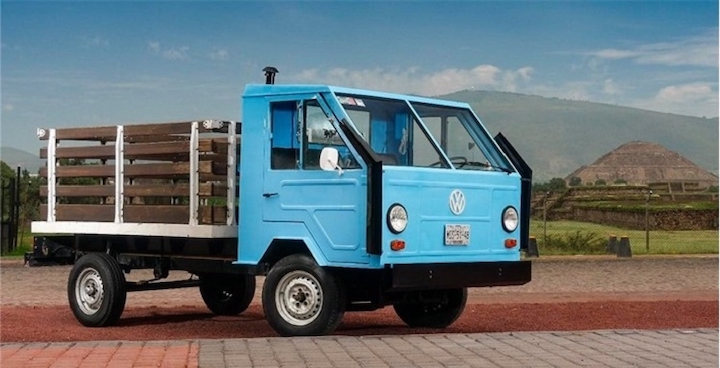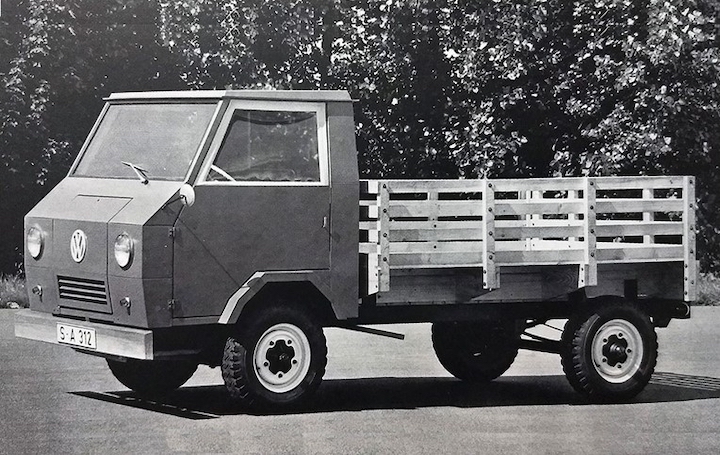Meet the Volkswagen Basis-Transporter, the spartan VW utility truck

(August 25, 2021) Over the years, Volkswagen has produced some recognizable vehicles that have earned their iconic places in the automotive industry. The Volkswagen Basis-Transporter lives at the opposite end of the spectrum as perhaps one of the rarest Volkswagen models ever produced.
In the 1970s, high gas prices and an uncertain economy fueled the need for basic utility vehicles worldwide that could be built affordably. The Volkswagen Basis-Transporter used a Beetle powertrain, but the engine and transmission were located under the cab and drove the front wheels. The two-door, boxy work truck was powered by an air-cooled 1.6-liter engine, could reach up to 50 hp and had a 4-speed manual transmission. About the size of a modern-day Volkswagen Jetta, the vehicle was able to reach 48 mph and the bed of the vehicle could carry up to 2,205 pounds. making it perfect for utilitarian purposes.

Volkswagen produced knock-down kits, or assemble-at-home products, in Germany and built complete air-cooled vehicles in Mexico between 1975 and 1979. Only 6,200 Basis-Transporter Prototypes were produced and distributed in developing countries like Mexico, Turkey and Pakistan. Volkswagen already had a foothold in the countries, thanks to the ever-popular Beetle, so demand for the bare-bones vehicle was particularly high. It also helped that they were inexpensive, easily fixable and sturdy.
As the Basis-Transporter Prototype was distributed, it garnered different nicknames in various regions of the world. In the Philippines, it was known as the “Trakbayan,” which translates to “country truck.” In Indonesia, it was sold as the “Mitra,” which translates to “partner,” and sported a different hood shape borrowed from the Volkswagen Bus.
Due to its limited run and distribution to select countries, intact Volkswagen Basis-Transporter examples are rare worldwide. If you see one moving on the streets, you’ve spotted something special.
